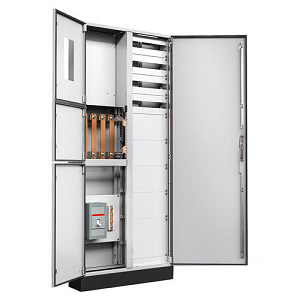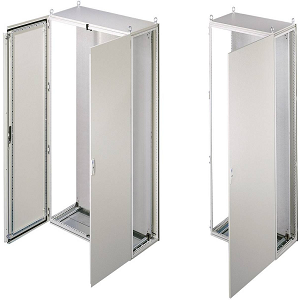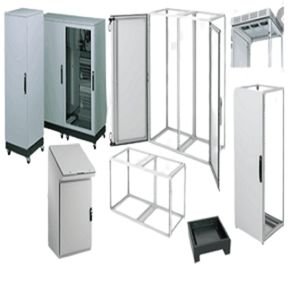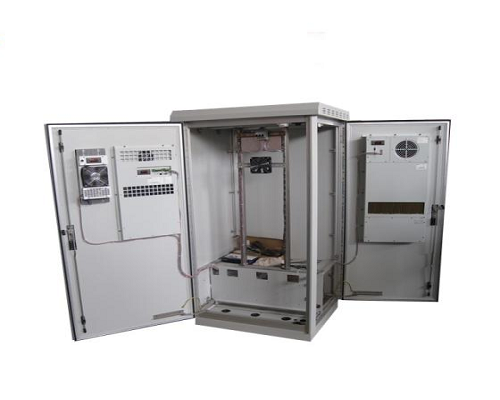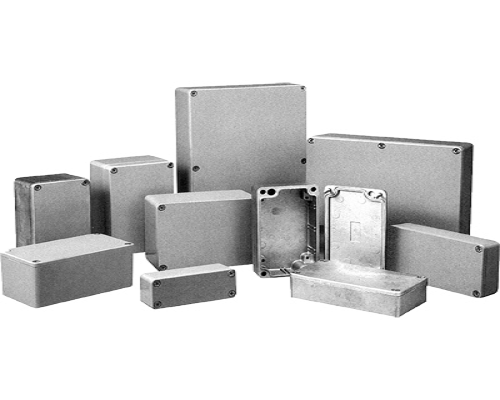Вашему бизнесу нужен модульный корпус? У KDM есть выбор. Модульные корпуса от KDM изготовлены из высококачественных материалов. Они полностью обеспечивают типичную гибкость и простоту управления электрооборудованием внутри корпуса.
Все модульные корпуса KDM на заводе имеют конкурентоспособную оценку. Это лучший корпус, используемый для разработки трансформирующихся требований недавних бизнес-операций. Этот тип корпуса может быть изготовлен для удовлетворения конкретных потребностей объекта. Он имеет стандартную рабочую температуру, вес, толщину, которые известны только команде kdm.
Модульный корпус KDM на самом деле имеет различные стили, особенности, преимущества и характеристики, которые полезны для повторного увеличения ваших маркетинговых возможностей. Одной из практических причин, по которой сконструирован модульный корпус KDM, является обеспечение поддержки облегченных нагрузок для промышленных применений. Он полностью обеспечивает защиту, необходимую для промышленного оборудования, приводов и элементов управления.
- Стандартные конструкции модульных корпусов
- Хорошо подходит для включения в бизнес
- Выполнить лучшее
- Легко эксплуатировать
Серия модульных корпусов KDM
Это комбинация двухсегментных чисел; пара боковых стенок и сердечник каркаса. Сердечник сборки на этих базовых модульных корпусах включает в себя монтаж панели в качестве дополнения. Он имеет высококачественные стальные конструкции.
Обычный модульный корпус, представленный KDM, защищен от вредного воздействия окружающей среды. Он имеет обычные конфигурации цельного корпуса, которые вносят большой вклад в работу энергосистемы.
Это единственный в своем роде модульный корпус. Электрические модульные корпуса KDM обеспечивают надежность хранения различных электрических элементов. Широко используются в промышленных приложениях и являются наиболее предпочтительными из многих.
Промышленный модульный корпус KDM имеет важные применения. Одно из важных применений — обеспечение защиты всего электронного оборудования, а также электрооборудования. Он больше ориентирован на обеспечение эффективной работы системы.
Доступны в различных цветовых решениях, например, серые модульные корпуса из мягкой стали, белые модульные корпуса из мягкой стали или черные модульные цвета из мягкой стали. Вы можете напечатать название своего бренда здесь, чтобы добиться популярности.
Модульные корпуса KDM доступны в стандартных размерах: ширина 345 мм, высота 225 мм и глубина 156 мм. Если вам нужны индивидуальные настройки, попросите KDM выполнить заказ.
Отправьте свой запрос на модульные корпуса KDM
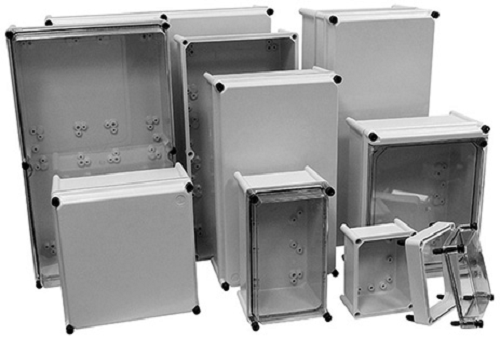

Этот модульный корпус изготовлен для обеспечения реалистичной гибкости. Гибкость этого инструмента используется для разработки потребностей в трансформации для дальнейшего бизнеса. Кроме того, при покупке оптом действительно ожидается огромная экономия денег.
Как поставщик модульных корпусных решений, KDM продолжает оказывать поддержку бизнесу каждого клиента. Наш завод предлагает множество запасов. Однако, говоря об их важных применениях, они подходят как для промышленных, так и для коммерческих применений. Легко применять и устанавливать для дальнейших применений.
- Имеет большой опыт в производстве модульных корпусов
- Известный производитель в Китае
- Полностью сертифицированный производитель
- Отлично построенный корпус
Сопутствующий продукт с модульными корпусами
Модульные корпуса: удобное и простое долгосрочное решение

Модульные корпуса представляют собой гибкие, простые в установке и обслуживании, компактные устройства защиты электрического или электронного оборудования и являются альтернативой монолитным корпусам для защиты оборудования.
Что такое модульный корпус?

Модульный корпус — это тип корпуса, который можно гибко собирать, перемещать и подключать к внутренним и внешним модулям. В отличие от монолитных корпусов, которые фокусируются на безопасности и прочности, модульные корпуса предлагают большую гибкость и использование пространства для приложений, требующих частой замены, обслуживания и расширения.
Структура модульного корпуса

Структура модульного корпуса состоит из рамы, панели, основания, внутренней монтажной конструкции, замков и петель, системы соединения, системы охлаждения и вентиляции в сочетании с различными уровнями защиты, каждый из которых может быть свободно настроен и расширен. Понимание структуры модульного корпуса делает более интуитивным обнаружение их высокой степени гибкости и расширяемости, ниже приводится подробное объяснение компонентов модульного корпуса.
Рамка: Рама обычно изготавливается из нержавеющей стали, алюминиевого сплава и рассчитана на малый вес и высокую прочность. Размеры и интерфейсы между рамами обычно следуют стандартизированному проекту и могут быть разобраны, расширены и отрегулированы с помощью структур сращивания профилей.
Панели: Панели модульного корпуса обычно состоят из передней панели, задней панели, боковых панелей и верхней панели, которые вместе с уплотнительными полосами позволяют корпусу быть полностью герметичным. Дверные панели под модульной конструкцией являются съемными для легкой установки и обслуживания и обычно доступны в виде цельнометаллических панелей, вентилируемых панелей, панелей из прозрачного стекла и других типов.
База: Основание в качестве опоры будет зарезервировано для импорта и экспорта кабеля, удобного управления проводкой, модульного основания корпуса, существует много типов, таких как фиксированное основание, регулируемое основание или основание с роликами для облегчения гибкого перемещения модульного корпуса.
Система крепления: Система крепления является ключевой частью модульного корпуса и используется для закрепления и установки внутреннего оборудования или компонентов для предотвращения повреждений, вызванных движением или вибрацией. Для модульных корпусов можно применять множество различных типов систем крепления, они следующие:
- Монтажные пластины
- Монтажные рельсы
- Монтажные кронштейны
- Направляющие рельсы
- Монтажные лотки
- Монтажные рамы
- Магнитные крепления
Двери и петли: Вы найдете широкий выбор петель и замков в модульных корпусах, например, петли, поддерживающие стандартные и быстроразъемные конструкции, а также интеллектуальные системы контроля доступа с дополнительными механическими и электромагнитными замками.
Система соединителей: Система соединения является одним из важных компонентов модульного корпуса, используемым для связи передачи сигнала и данных между внутренними и внешними устройствами корпуса, гарантируя, что модульный корпус может быть легко подключен к другим устройствам для достижения цели гибкого расширения. Система соединения поддерживает модульный корпус следующими способами.
- Электрическое подключение
- Передача сигнала
- Передача данных
- Модуль расширения
Охлаждение и вентиляция: Предотвращают перегрев оборудования внутри корпуса, что важно в условиях высоких температур и в ситуациях, когда требуется контроль температуры.
Система защиты: Система защиты является одной из основных систем модульного корпуса, включая заземление и вибро- и ударопрочную конструкцию. Согласно пыленепроницаемости, водонепроницаемости, способности имитации коррозии корпуса, а также для определения области применения модульного корпуса и уровня защиты.
Размеры модульных корпусов

Модульные шкафы выпускаются в различных размерах для размещения различных типов и размеров оборудования и обеспечения защиты и места для установки. Ниже мы кратко опишем три стандартных размера модульных корпусов, чтобы помочь вам лучше понять.
- Малый модульный корпус: Размер обычно варьируется от 100 мм до 400 мм, они используются для защиты электронного оборудования, маломощных коммунальных устройств, датчиков и небольших силовых терминалов. Эти корпуса обычно не требуют много внутреннего пространства и поэтому могут быть установлены на стену и часто используются внутри помещений. Небольшие модульные корпуса обеспечивают минимальную электрическую защиту и могут соответствовать классам защиты от IP30 до IP65.
- Средний модульный корпус: Типичные размеры находятся в диапазоне от 500 мм до 1200 мм и обычно используются в компьютерных залах, распределительных помещениях для обработки больших электрических нагрузок и электрических соединений из-за их масштабируемости. Типичные модульные корпуса среднего размера монтируются на полу и в стойке и требуют степени защиты IP55 или IP65 и выше.
- Большой модульный корпус: Обычно используемые в размерах от 1300 мм до 2200 мм, они используются в промышленных средах, центрах обработки данных и энергетической промышленности, где они часто требуются для размещения большого количества электрооборудования и сложных систем управления. Большинство больших модульных корпусов предназначены для модульных установок, чтобы удовлетворить потребности большого оборудования, такого как большие шкафы обслуживания, оборудование подстанций и многое другое, которое требует высокого уровня защиты, IP67 или даже выше.
Различные типы модульных корпусов

Модульные корпуса предлагают простое и гибкое решение для защиты оборудования. Ниже мы представляем вам различные типы модульных корпусов с четырех точек зрения, чтобы дать вам лучшее понимание их номинальных напряжений, рабочих сред и требований к защите.
1. По уровню напряжения
- Модульный корпус низкого напряжения: Подходит для электрических систем до 1000 В переменного тока, 1500 В постоянного тока. Этот тип модульного корпуса обычно используется в промышленной автоматизации, управлении зданиями, серверных комнатах, сценариях распределения электроэнергии в промышленности. Распространенные типы включают распределительные шкафы низкого напряжения, промышленные панели управления и Стойки для серверов ИТ.
- Модульный корпус среднего напряжения: Подходит для систем передачи и распределения среднего напряжения от переменного тока 1000 В до 35 кВ, включая 10 кВ, 24 кВ, 35 кВ и другие напряжения. Модульные корпуса для более низких напряжений требуют настройки с более высокими уровнями изоляции, такими как воздушная, вакуумная и газовая изоляция, для повышения безопасности и стабильности, и тобычно устанавливается на подстанциях, в промышленных распределительных сетях, на железнодорожном транспорте и на станциях по производству электроэнергии.. Распространенные типы: Распределительное устройство среднего напряжения, блок кольцевой магистрали (RMU), корпус подстанции среднего напряжения.
- Модульный корпус высокого напряжения: Подходит для систем передачи и распределения высокого напряжения выше 1000 В переменного тока, включая 10 кВ, 35 кВ, 110 кВ и даже выше 220 кВ. Для предотвращения пробоя высокого напряжения требуются высокоизоляционные материалы, а для повышения безопасности может использоваться газовая или вакуумная изоляция, обычно устанавливаемая в подстанции, электростанции и другие места. Распространенные типы: Высоковольтное распределительное устройство, распределительное устройство с элегазовой изоляцией (GIS), распределительный ящик для высоковольтного кабеля.
2. По данным охраны окружающей среды
- Модульный корпус для помещений: Внутренние модульные корпуса предназначены для установки в серверных комнатах, на заводах, в коммерческих и жилых зданиях. Распространенными типами являются распределительные шкафы питания, промышленные шкафы управления и т. д. Эти модульные корпуса обычно требуют рейтинга IP65.
- Модульный корпус для наружного применения: Эти типы корпусов модулей обычно сталкиваются с более суровыми климатическими условиями и должны уделять внимание их ветрозащитным, дождезащитным, коррозионно-стойким, пылезащитным и ударопрочным характеристикам. Обычно ссылаются на систему классов IP и NEMA, распространенными типами являются шкаф базовой станции, шкаф зарядного устройства и т. д.
3. По характеристикам защиты
- Стандартный модульный корпус: Подходит для общих коммерческих и промышленных сред, в основном для защиты электрического или электронного оборудования в корпусе от случайного контакта или проникновения пыли, брызг жидкости. Эти модульные корпуса часто изготавливаются из холоднокатаной стали, нержавеющей стали, алюминиевого сплава, с классом защиты IP20~40.
- Водонепроницаемый и пылезащищенный корпус: Этот тип модульного корпуса требует очень высокой степени герметизации, обычно используется в наружных, влажных, пыльных промышленных средах, как правило, при производстве нержавеющей стали 304, алюминиевого сплава, и сопровождается специальным процессом нанесения коррозионно-стойкого покрытия. Обычно относится к уровням защиты IP66, IP67 или выше.
- Взрывозащищенный модульный корпус: Подходит для использования в опасных промышленных средах, где присутствуют легковоспламеняющиеся и взрывоопасные пыль и газы, и должно соответствовать таким показателям безопасности, как ATEX и IECEx. Эти модульные корпуса обычно изготавливаются из алюминия и нержавеющей стали с усиленными уплотнениями и являются искробезопасными, огнестойкими и конструкциями повышенной безопасности.
4. Согласно разным конструкциям
- Отдельно стоящий модульный корпус: Отдельно стоящие модульные корпуса обычно проектируются со съемными панелями, регулируемыми монтажными направляющими и устройствами расширения для легкого расширения модуля, настройки и последующей установки. Обычно используются в областях, требующих частого обслуживания и обширного расширения, таких как промышленные, электрические и информационные услуги.
- Модульный корпус с возможностью стыковки: Модульные корпуса Bayable обычно используются в центрах обработки данных, станциях управления питанием и автоматизированных производственных линиях и обычно стандартизированы для 19-дюймовых стоечных систем. Модульная конструкция подключения легко расширяет несколько корпусов и позволяет объединять их бок о бок, обеспечивая большое удобство для крупномасштабной интеграции оборудования.
Преимущества модульных корпусов

Узнав о подходящих типах модульных корпусов, мы также сможем открыть для себя их другие преимущества.
-
Широкие возможности настройки
Высокая степень настраиваемости является одной из важнейших характеристик модульных корпусов, причем не только с точки зрения размера, материала, типа, зарезервированных слотов для соединений, съемных панелей и т. д., но и с точки зрения классов защиты NEMA и IP для различных сценариев использования.
-
Гибкая установка
Простая и гибкая установка — еще одно важное преимущество модульных шкафов. Благодаря съемным компонентам модульные шкафы совместимы с широким диапазоном размеров и масштабов оборудования, что позволяет удовлетворять различным требованиям к компоновке. По сравнению с более жесткой установкой монолитных шкафов, модульные шкафы также могут быть приспособлены к различным способам установки, таким как напольная, стоечная и настенная.
-
Легкая масштабируемость
Модульные корпуса не только имеют гибкую внутреннюю структуру, но и легко подключаются и расширяются. Согласно зарезервированным соединительным слотам или направляющим, их можно легко подключать для формирования больших интегрированных систем для удовлетворения большего количества потребностей.
-
Легко обслуживать
Простота обслуживания модульных корпусов во многом зависит от гибкой, взаимозаменяемой конструкции. Используя съемные панели и направляющие, части, которые необходимо обслуживать или заменять, можно частично демонтировать, не затрагивая другие части.
-
Эффективность использования пространства
Эффективное использование пространства является существенным преимуществом модульных корпусов, особенно в сложных условиях и ограниченном пространстве, поскольку они позволяют экономить пространство на полу за счет штабелирования, бок о бок или вертикального монтажа, или размещения их горизонтально или вертикально. Модульные корпуса также позволяют интегрировать несколько модулей в один блок с помощью стандартизированных интерфейсов, тем самым уменьшая общее требуемое пространство и обеспечивая высокую плотность хранения без неиспользуемого пространства.
-
Безопасность
Распространенное заблуждение о безопасности модульных корпусов заключается в том, что они не так безопасны, как монолитные корпуса. Однако, модульные корпуса при проектировании в той же степени учитывают, как максимизировать степень защиты оборудования, поэтому они, как и монолитные корпуса, снабжены водонепроницаемостью, пыленепроницаемостью, ударопрочностью, взрывозащищенностью, противопожарной защитой и т. д., различными функциями для различных областей применения, таких как промышленные, химические заводы, горнодобывающая и энергетическая отрасли.
-
Высокая эффективность затрат
Несмотря на то, что модульные корпуса изначально дороже монолитных, благодаря гибкости расширения и обслуживания они более экономичны в долгосрочной перспективе, поскольку позволяют избежать повторной замены и разборки.
Области применения модульных корпусов

Модульные корпуса имеют широкий спектр применения и широко используются в различных отраслях промышленности. Ниже приведено несколько распространенных отраслей, в которых могут использоваться модульные корпуса.
1. Центр обработки данных и облачные вычисления
Модульные корпуса являются распространенным устройством хранения и защиты в центрах обработки данных, поскольку центры обработки данных предъявляют чрезвычайно высокие требования к расширению и быстрому обслуживанию, а монолитные корпуса не в полной мере адаптированы к этому постоянному спросу на вычисления и хранение.
2. Промышленная автоматизация и электроуправление
В сфере промышленной автоматизации и электроуправления модульные корпуса широко используются, поскольку они позволяют быстрее заменять модули управления, а также легко настраивать конфигурации оборудования в соответствии с производственными потребностями, обеспечивая большую гибкость по сравнению с цельными шкафами.
3. Возобновляемая энергия
В отрасли возобновляемой энергетики, где силовые модули необходимо часто адаптировать к масштабу энергии, а также динамически расширять и обслуживать в соответствии с масштабом, модульные корпуса могут адаптироваться к изменяющимся энергетическим условиям и обеспечивать легкую регулировку.
4. Общественный транспорт
Благодаря целенаправленным индивидуальным разработкам модульные корпуса могут быть оснащены такими функциями, как устойчивость к вибрации, защита от электромагнитных помех и удаленный мониторинг, чтобы обеспечить удобную и гибкую защиту оборудования на железных дорогах, в поездах и других системах общественного транспорта, подверженных вибрации.
5. Телекоммуникации и сетевые коммуникации
Важнейшей особенностью коммуникационного оборудования является необходимость быстрого расширения портов и функций, и существует очень высокий спрос на быстрое развертывание. Модульные корпуса могут адаптироваться к растущему спросу на расширение и подготовиться к возможным дополнительным конфигурациям в любое время, зарезервировав слоты.
6. Базовые станции связи
В базовой станции связи модульные корпуса также имеют превосходные характеристики. Благодаря гибкой внутренней структуре и высокой совместимости они могут максимально оптимизировать внутреннее и внешнее пространство для достижения стабильной, безопасной и долгосрочной работы.
7. Строительство и инфраструктура
Модульные корпуса в основном устанавливаются в зданиях и системах управления электропитанием и позволяют регулировать модули питания и управления в соответствии с потребностями здания, что обеспечивает более быстрое и более простое расширение и обслуживание по сравнению с монолитными корпусами, а также повышает эффективность.
Заключение

В целом, модульные корпуса гибки в расширении, портативны в установке, просты в обслуживании и легко настраиваются для широкого спектра применений, и стали первым выбором для защиты электрического, промышленного и другого оборудования. Мы рекомендуем вам оценить отрасль и среду применения перед покупкой, установкой и настройкой модульного корпуса для вашего оборудования, чтобы модульный корпус достиг наилучших результатов.



